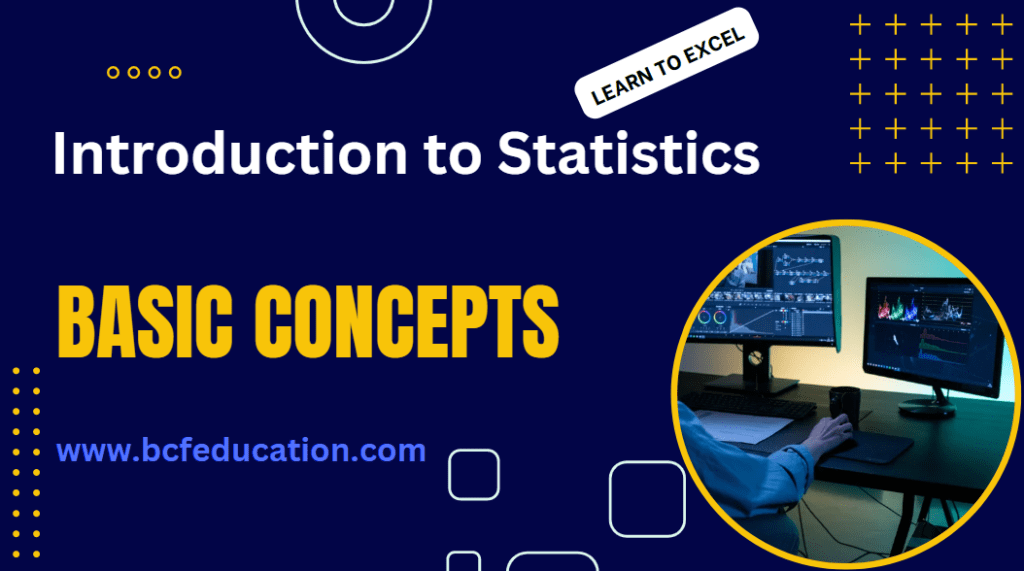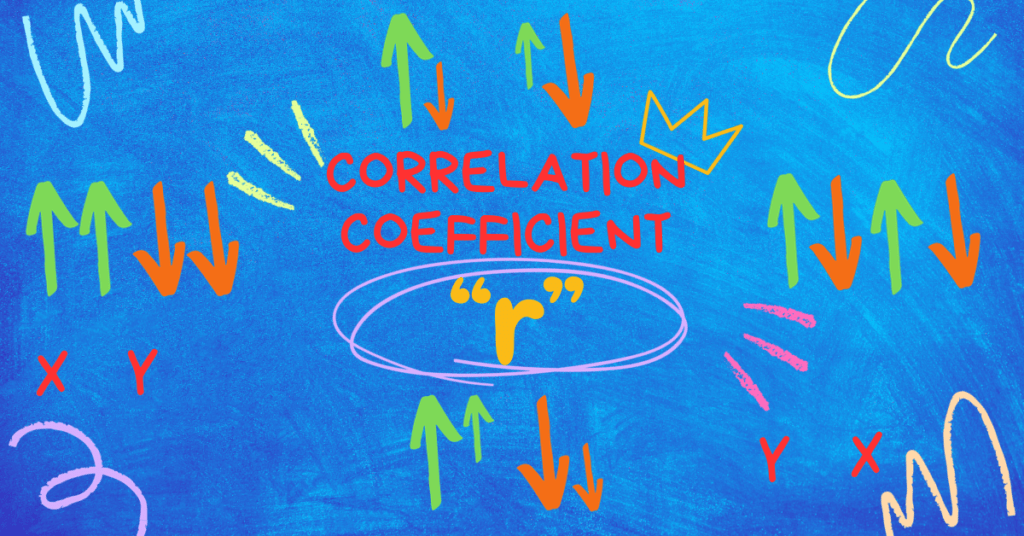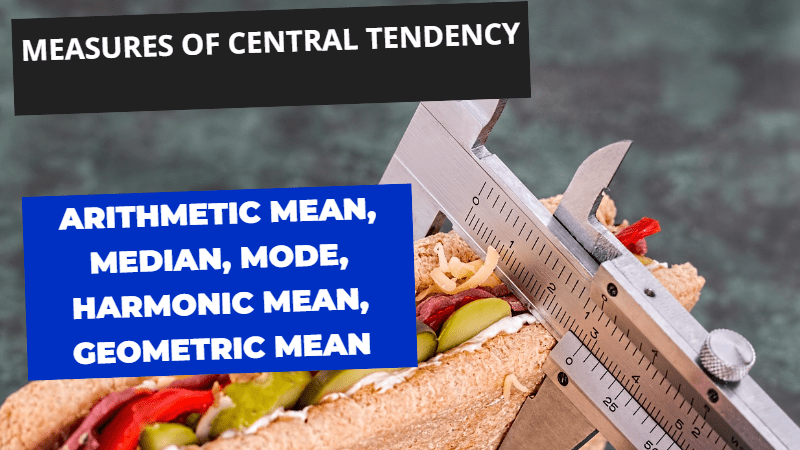In this post, we are going to discuss, Introduction to Statistics Basic Important Concepts such as branches of statistics, population, statistic, parameter & statistic, types of variables, types of data etc. These concepts are asked in the papers of Business Statistics, Statistics or Business Statistics and Mathematics, Quantitative Techniques in Business in all major boards such as FBISE, BISELHR, BISERWP, Punjab University, University of Sargodha and in all major Indian Universities and Boards. On the other hand these concepts are equally important for data scientists and many tests related to data scientists.
Table of Contents
Introduction to Statistics Basic Important Concepts
Introduction
- Statistics is a branch of applied mathematics.
- It deals with data e.g. collection of data, organization of the data, interpretation or analysis of the data and presentation of the data.
- Mainly it deals with quantitative analysis of the data and rarely touches qualitative aspect of the data.
- It is the science of getting average and probability but overall field of statistical analysis is so vast.
- Governments, Corporate Sectors, Natural & Physical Sciences and Social Sciences direly need the Statistics to analyze the data and making and implementation of their decision on practical ground.
Branches of Statistics
There are two main branches of Statistics:
Descriptive Statistics & Inferential Statistics
(i) Descriptive Statistics
It is first branch of statistics in which collected data is presented in the form of tables, graphs and charts. We can say that it is the branch of collection and presentation of the data.
(ii) Inferential Statistics
In inferential statistics, gathered data is concluded after making hypothesis while using sample and populations so it is the science of inference that is why it is called inferential statistics.
Population & Sample
Population: Whole group under discussion is called population. For example if you want to study some specific issue which is related to a persons of the state whose age is from 20 to 30 then all the persons of a state having age 20 to 30 is your population.
For example if you want to study some character of your college students then all your college students who are studying with you are your population.
Sample: The part of population is called sample. For example there are 500 students in your college and you take only 50 students for your analysis, then 50 students will be sample for you.
Why Sample? Because it is too much costly and time consuming to take the data of whole college so you can take a sample because it is time and cost efficient.
Is Sample a true representative of population or not?
Yes sample is a true representative of a population if you select the sample correctly out of well shuffled data or your proportion of selection is truly associated with the demography of the data.
Think about it!
When you cook food in your kitchen, you taste the food before serving either it is good or not.
Do you taste the whole dish or just taste the part of it?
Is well shuffled food a good representative of your whole food?

Parameter & Statistic
Parameter
Any statistical estimator which represents a population is called parameter. For example population average and variance are parameters.
![]()
![]()
Statistic
Any statistical estimator which represents the sample is called statistic. For example sample average and variance are statistic.
![]()
![]()
Data and its Types
Data: A set of numbers, digits, facts and figures which researchers gather during survey is called data.
Editing of Data: Editing of data means changing, correction of errors, addition of missing frequencies or removal of duplicates or errors from the gathered data.
Types of Data:
- Primary data
- Secondary data
- Quantitative data
- Qualitative data
- Discrete data
- Continuous data
Primary Data
Primary data is a type of data which is not collected by someone previously or it is fresh newly collected data. Ungrouped data is also called primary data. For example if you collect the fresh data from your college students which is not collected by someone previously then it will be primary data for you.
Sources of Collection of Primary Data:
- Questionnaire
- Personal Investigation
- Through Telephone
- Through SMS
- Through Email
Secondary Data
Secondary data is a type of data which is collected by someone previously or it is old previously collected data. Grouped data is also called secondary data. For example if you need the inflation historical past data record, you can take this from monetary authorities of your country or from research and data oriented magazine or website.
Sources of Collection of Secondary Data:
- Research Organizations
- Research Magazines & Journals
- Monetary Authorities
- Statistical Departments
- State Bank
- Research based Websites
Quantitative Data
A data which is represented in terms of quantity is called quantitative data. For Example data regarding salary, income, consumption, saving, GDP, NNP, Growth Rate etc.
Qualitative Data
A data which is represented in terms of quality or attribute is called qualitative data. For example color of eyes, color of hairs etc.
Discrete Data
Data which has some specific value within a given range is called discrete data. For Example Number of persons, Number of Oranges, Number of pencils etc.
e.g. 2, 4, 6, 8, 10 etc.
Continuous Data
Data which has any value within a given range is called continuous data. For Example weight, height etc.
e.g. 30.1, 20.34, 60.19 etc.
Variable Vs Constant
Constant:
A value which remains fix is called constant or something that is not variable. For example Value of pi π which is 22/7, Avogadro number and mass of earth etc.
Variable:
A value which does not remain fix is called variable or something that is not constant. For example income, saving, consumption, GDP, NNP, Growth rate, Inflation, Interest rate etc.
Types of Variables
- Dependent or Responding Variable
- Independent Variable and Explanatory Variable
- Discrete Variable
- Continuous Variable
- Quantitative Variable
- Qualitative Variable
- Categorical or Nominal Variable
- Confounding Variable
- Endogenous Variable
- Exogenous Variable
- Binary or Dichotomous Variable
- Random Variable
- Intervening Variable
Dependent or Responding Variable
Variable which depends on another variable is called dependent or in informal term a responding variable. For Example in case of income and consumption, consumption is dependent on income.
Independent and Explanatory Variable
Independent variable is a variable which does not depend on any other variable is called independent variable and explanatory variable is also independent but there is a minor difference and that difference is that explanatory variable is independent to some other variables but for some it may be not.
Discrete Variable
A variable in which a data has some specific value within a given range is called discrete variable. For Example Number of persons, Number of Oranges, Number of pencils etc.
e.g. 2, 4, 6, 8, 10 etc.
Continuous Variable
A variable in which a data which has any value within a given range is called continuous data. For Example weight, height, age etc.
e.g. 30.1, 20.34, 60.19 etc.
Quantitative Variable
A variable which is described in terms of quantity is called quantitative variable. For example income, consumption, saving, weight, age, blood pressure etc.
Qualitative Variable
A variable which can be described in terms of quality or attribute is called qualitative variable. For example color of eyes, color of hair, face complexion etc.
Categorical or Nominal Variable
A variable which can be subdivided into further categories. For example in case of gender male and female are categories.
Confounding Variable
Confounding variables are those hidden variables which impose the hidden effect on your experiment but not shown directly.
Endogenous Variable
Endogenous variables are just like dependent variables and they also affected by different other variables in the system. These variables are exclusively used in advance topics of Econometrics.
Exogenous Variables
Exogenous variable are just opposite to the endogenous variables these are not affected by others in a system but they put impact on other variables in a system.
Binary or Dichotomous Variables
Binary or Dichotomous variables are those variables in which outcomes are assigned by the values 0 and 1 so that is why these are called binary or dichotomous.
Random Variables
Random variables are those variables in which event outcomes of a random experiment are gathered so they are typically associated with the outcomes of a random experiments that is why these are called random variables.
Intervening Variables
Intervening variables are hypothetical variables. These variables are used to explore the causal link between other variables. These are hypothetical so they are not observed in an experiment.
Census:
Complete enumeration or count of the population of the whole country after some specific time period 5 years or 10 years is called census. It is a time consuming and costly process. Each country in the world must do a census after some specific time period to know the data and information about population.
All the information which I presented to you is least but not last.
I defined these terms in a way through my teaching experience that these must be understood by you before going deep into Statistics.
You may also interested in the following:
Business Statistics Solved Paper FBISE 2012 ICOM II, MCQS, Short Questions, Extensive Questions
Business Statistics Solved Paper FBISE 2013 ICOM II, MCQS, Short Questions, Extensive Questions
Business Statistics Solved Paper FBISE 2015 ICOM II, MCQS, Short Questions, Extensive Questions
Business Statistics Solved Paper FBISE 2016 ICOM II, MCQS, Short Questions, Extensive Questions
Business Statistics & Mathematics, Solved Paper 2010, Punjab University, BCOM, ADCI
Business Statistics & Mathematics, Solved Paper 2009, Punjab University, BCOM, ADCI
Business Mathematics and Statistics, Solved Paper 2008, Punjab University, BCOM,ADCI
Business Mathematics and Statistics, Solved Paper 2007, Punjab University, BCOM,ADCI
Introduction to Statistics Basic Important Concepts
Measures of Central Tendency, Arithmetic Mean, Median, Mode, Harmonic, Geometric Mean
Correlation Coefficient, Properties, Types, Important Formulas for Correlation Coefficient





